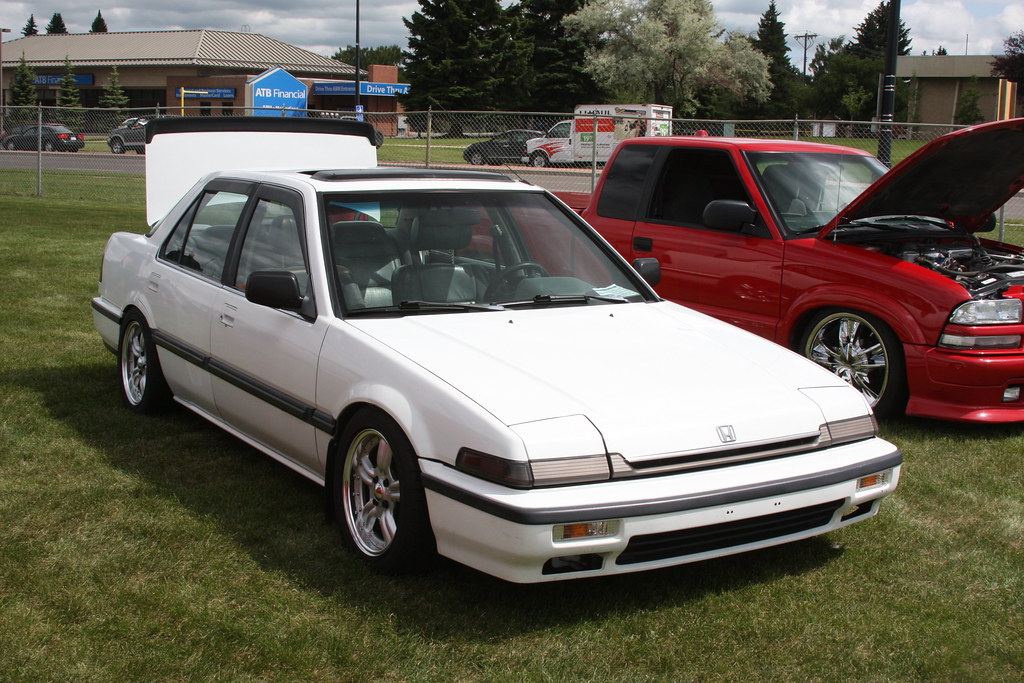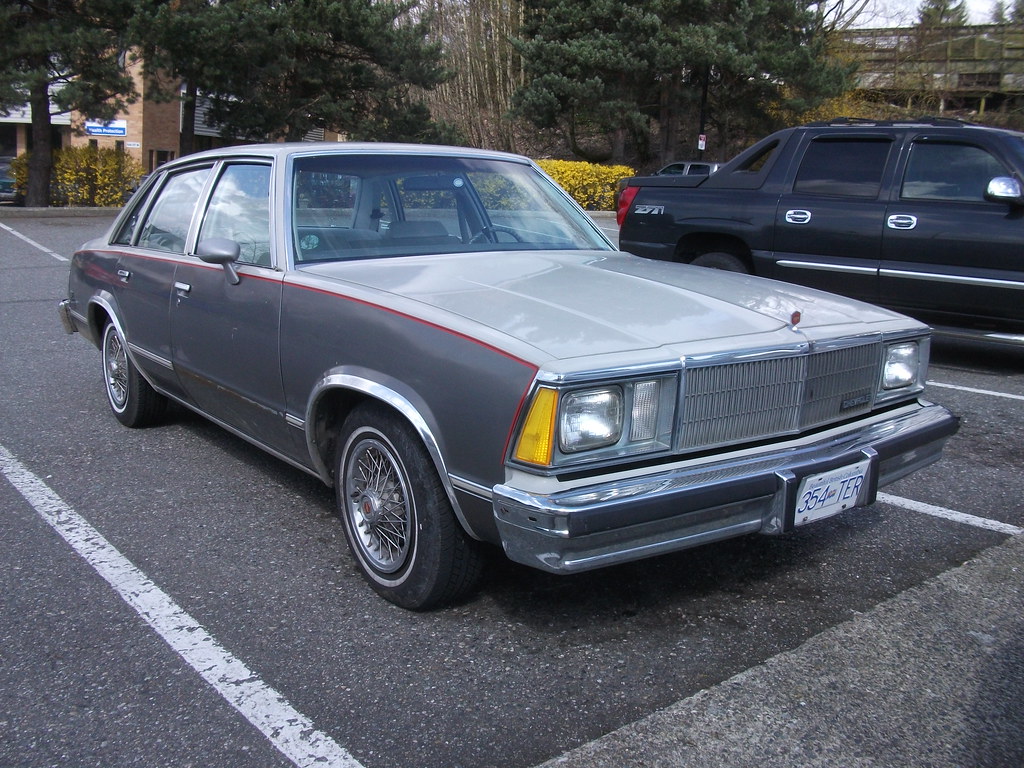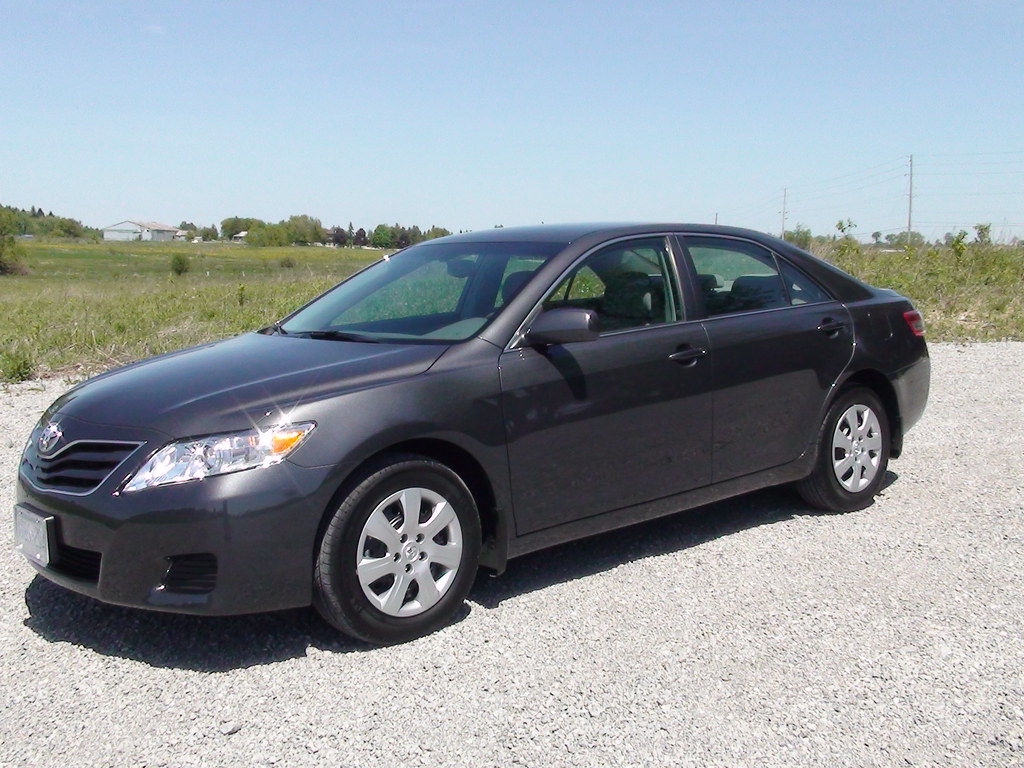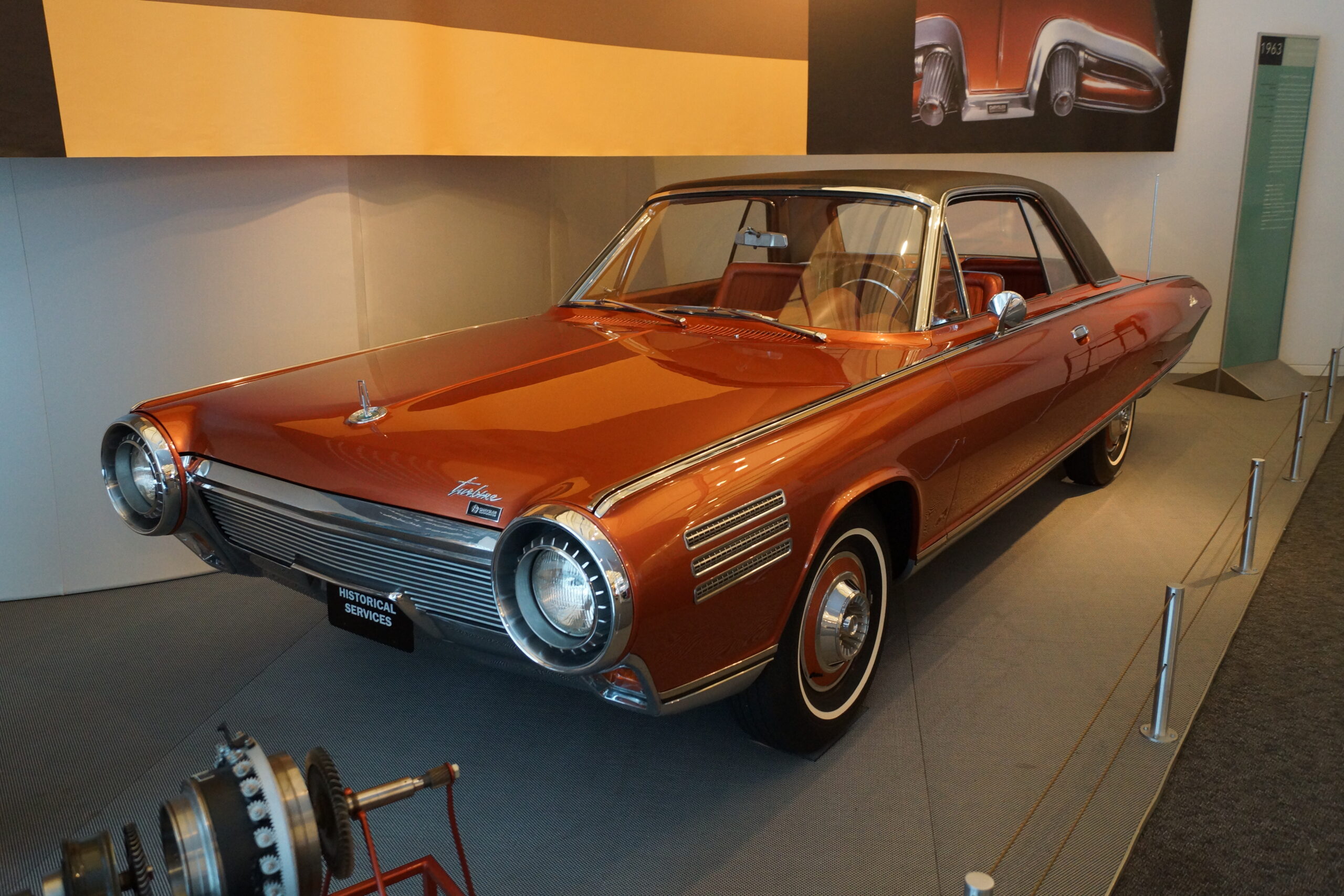Modern automobiles are undeniably safer than their predecessors, a testament to the continuous evolution of safety standards driven by dedicated organizations like the Insurance Institute for Highway Safety (IIHS). For new car buyers, the IIHS’s Top Safety Pick and Top Safety Pick+ ratings serve as crucial benchmarks, offering a valuable sense of security and peace of mind in the event of an unfortunate incident. This unwavering commitment to safety, however, means that the work of evaluation and enhancement never truly ceases, continually pushing the automotive industry towards ever-higher levels of protection for occupants.
The IIHS is renowned for its independent testing and unbiased evaluations, meticulously presenting information backed by extensive data and research. While many vehicles now perform commendably in traditional crash tests—with headlight performance often being a primary challenge for those falling short of a Top Safety Pick accolade—the IIHS recently elevated its standards. They’ve introduced a more demanding side impact test, employing a faster and heavier test rig to more accurately simulate real-world collision scenarios. This significant upgrade reflects ongoing research indicating that the older side impact evaluations no longer fully mirrored the complexities of actual side crashes, which still account for nearly a quarter of passenger vehicle fatalities.
This updated side impact test carries particular relevance for the mid-size sedan segment. Despite the growing popularity of SUVs, a substantial number of consumers continue to opt for mid-size sedans like the Toyota Camry, Honda Accord, and Nissan Altima. These vehicles frequently encounter mid-size and large SUVs on the road, necessitating robust side-impact protection. The new IIHS test addresses this dynamic directly, simulating a collision with a heavier vehicle at a higher speed. This article will provide an in-depth, objective analysis of how seven prominent mid-size sedans performed under these intensified conditions, drawing exclusively from the latest IIHS findings to offer clear, consumer-focused advice on their updated safety profiles.

1. **Subaru Outback: Setting the ‘Good’ Standard**
In the rigorous new side impact evaluation, the Subaru Outback distinguished itself as the sole mid-size sedan among the tested batch to achieve a ‘Good’ rating. This strong performance underscores Subaru’s dedication to occupant protection and provides a clear benchmark for other manufacturers striving to meet the IIHS’s elevated safety criteria. The ‘Good’ rating signifies a high level of protection across critical body regions, minimizing the risk of severe injury in a side-on collision scenario.
A key factor contributing to the Subaru Outback’s superior performance is its relatively higher ride height. IIHS President David Harkey noted, “With vehicles that sit lower to the ground, the striking barrier hits higher on the door panel.” In the Outback’s case, its elevated stance allowed the heavier, faster barrier to strike the lower, stronger parts of the doors. This structural advantage significantly mitigated the crash energy, effectively reducing the chance of serious injury even under the heightened stress of the updated test, which simulates a heavier vehicle traveling at a faster speed.
While the Outback achieved a ‘Good’ overall rating, it’s important to note that the IIHS evaluations generally observed a higher risk of torso and pelvic injury across the entire range of vehicles tested under the new side impact standards. This highlights the inherent challenges of these more aggressive tests, indicating areas where even top-performing vehicles might see slight increases in specific injury risks compared to older, less demanding evaluations. For the Subaru Outback, its impressive score means it will continue to receive the prestigious TOP SAFETY PICK+ award, reinforcing its position as a leader in automotive safety.
Car Model Information: 2013 Subaru Outback 2.5i Limited
Name: Subaru Outback
Caption: 2023 Subaru Outback Premium
Manufacturer: Subaru
Production: 1994–present
ModelYears: 1995–present
Assembly: Ota, Gunma
Aka: Subaru Legacy
Class: Mid-size car
BodyStyle: station wagon
Categories: All Wikipedia articles written in American English, All articles with unsourced statements, Articles containing Japanese-language text, Articles with short description, Articles with unsourced statements from April 2012
Summary: The Subaru Outback is an automotive nameplate used by the Japanese automaker Subaru for two different themed vehicles: a Legacy-derived station wagon, the Outback (1994–present, also sold as Legacy Outback (Japanese: スバル・レガシィアウトバック, Hepburn: Subaru Regashi Autobakku) in some markets), and an Impreza-derived off-road themed hatchback, the Outback Sport (1994–2011).
Most versions of the Outback wagon and Outback Sport have had all-wheel drive as standard equipment.
Get more information about: Subaru Outback
Buying a high-performing used car >>>
Brand: Subaru Model: Outback
Price: $7,995 Mileage: 175,533 mi.
Read more about: The Quest for Calm: Unveiling the Top 15 Quietest Midsize SUVs of 2024 for a Serene Drive

2. **Hyundai Sonata: An ‘Acceptable’ Performer with a Catch**
The Hyundai Sonata emerged from the updated side impact test with a respectable ‘Acceptable’ rating, placing it among the three highest-scoring models in this initial batch alongside the Subaru Outback and Volkswagen Jetta. An ‘Acceptable’ rating indicates a reasonable level of protection for occupants, though not quite at the pinnacle achieved by a ‘Good’ score. This result suggests that while the Sonata offers solid side-impact protection, there may be areas where improvements could further enhance occupant safety in the most severe side collisions.
For the 2022 model year, the Hyundai Sonata has already earned a Top Safety Pick award, demonstrating a strong safety foundation across various crash tests. However, the context information notes that it fell short of a ‘Good’ headlight rating across its entire range, which prevented it from achieving the higher-tier Top Safety Pick+ accolade. While this specific detail pertains to headlight performance rather than side-impact protection, it illustrates the comprehensive nature of IIHS evaluations, where all aspects of a vehicle’s safety features are scrutinized.
Looking ahead, the Sonata’s ‘Acceptable’ rating in the updated side-impact test is crucial for its continued eligibility for IIHS awards. A car must score “Acceptable” or “Good” during the side-impact testing to receive an award in future model years. The good news for Sonata is that its ‘Acceptable’ score means it would still receive the TOP SAFETY PICK award, assuming all other criteria are met. This outcome underscores that while not ‘Good,’ ‘Acceptable’ is a strong enough performance to maintain important safety designations, providing consumers with a confident choice.
Car Model Information: 2015 Hyundai SONATA SE
Name: Hyundai Sonata
Caption: 2024 Hyundai Sonata SEL (US)
Manufacturer: Hyundai Motor Company
Production: 1985–present
Class: Mid-size car
BodyStyle: sedan (automobile)
Layout: ubl
Predecessor: Hyundai Stellar
Categories: 1990s cars, 2000s cars, 2010s cars, 2020s cars, All Wikipedia articles written in American English
Summary: The Hyundai Sonata (Korean: 현대 쏘나타) is a mid-size car that has been manufactured by Hyundai since 1985. The first generation Sonata, which was introduced in 1985, was a facelifted version of the Hyundai Stellar with an engine upgrade, and was withdrawn from the market in two years due to poor customer reaction. While the nameplate was originally only sold in South Korea, the second generation of 1988 was widely exported.
The Sonata is currently manufactured in South Korea, China, and Pakistan. It was named after the musical term, sonata.
Get more information about: Hyundai Sonata
Buying a high-performing used car >>>
Brand: Hyundai Model: Sonata
Price: $11,485 Mileage: 59,515 mi.

3. **Volkswagen Jetta: Holding Its Own with an ‘Acceptable’ Mark**
The Volkswagen Jetta also secured an ‘Acceptable’ rating in the IIHS’s updated side impact test, joining the Hyundai Sonata and Subaru Outback as one of the three models to achieve either a ‘Good’ or ‘Acceptable’ score. This performance positions the Jetta as a competent contender in terms of side-impact safety under the new, more challenging criteria. An ‘Acceptable’ rating suggests that the vehicle offers adequate protection, though potentially with some areas for refinement to reach the highest ‘Good’ standard.
Unlike the Subaru Outback and Hyundai Sonata, the Volkswagen Jetta does not currently hold a Top Safety Pick or Top Safety Pick+ rating for the 2022 model year. While the context does not explicitly detail the reasons for this, its ‘Acceptable’ side-impact performance, combined with its overall IIHS evaluation history, will be critical for its future standing. The new requirement for an ‘Acceptable’ or ‘Good’ rating in this updated side-impact test will be essential for vehicles to qualify for Top Safety Pick awards starting in 2023, and a ‘Good’ rating will be necessary for Top Safety Pick+.
The Jetta’s ‘Acceptable’ score, therefore, represents a solid foundation for future safety accolades. Automakers have a window of opportunity to make necessary structural changes and lessen the risk of injuries, potentially improving scores further. For the Jetta, maintaining this ‘Acceptable’ performance is key, and any enhancements could help it secure a TSP award in the future. This outcome provides Volkswagen with clear data to inform potential design modifications aimed at optimizing occupant protection even further.
Car Model Information: 2024 Volkswagen Jetta 1.5T Sport
Name: Volkswagen Jetta
Production: 1979–present
Class: Compact car
Sp: uk
Categories: 1980s cars, 1990s cars, 2000s cars, 2010s cars, All-wheel-drive vehicles
Summary: The Volkswagen Jetta () is a compact car/small family car manufactured and marketed by Volkswagen since 1979. Positioned to fill a sedan niche slightly above the firm’s Golf hatchback, it has been marketed over seven generations, variously as the Atlantic, Vento, Bora, City Jetta, Jetta City, GLI, Jetta, Clasico, and Sagitar (in China).
The Jetta has been offered in two- and four-door saloon / sedan and sometimes as five-door wagon / estate versions. Since the original version in 1980, the car has grown in size and power with each generation. By mid-2011, almost 10 million Jettas have been produced and sold all over the world. As of April 2014, Volkswagen marketed over 14 million, becoming its top selling model.
Get more information about: Volkswagen Jetta
Buying a high-performing used car >>>
Brand: Volkswagen Model: Jetta
Price: $20,044 Mileage: 15,624 mi.

4. **Honda Accord: A ‘Marginal’ Performance Under Scrutiny**
The Honda Accord, a long-standing segment stalwart, unfortunately earned a ‘Marginal’ rating in the IIHS’s updated side impact test. This score indicates that while some protection is offered, there are significant concerns regarding occupant safety in a severe side collision. A ‘Marginal’ rating suggests that the vehicle’s structure or restraint systems did not perform optimally under the intensified conditions of the new test, warranting closer examination and potential re-engineering by the manufacturer.
The IIHS evaluations specifically highlighted intrusion into the cabin as a contributing factor to the Accord’s ‘Marginal’ rating. Although the intrusion was less severe compared to some other models that scored ‘Poor,’ it still signified a heightened risk of injury. Furthermore, testing showed a higher risk of injury to the driver’s pelvis and head. This critical detail revealed that the crash dummies’ heads slipped below the side curtain airbags and struck the window sill, a significant protection deficiency that directly impacts the safety of occupants in a real-world scenario.
This ‘Marginal’ rating carries substantial implications for the Honda Accord’s future IIHS safety awards. Previously, almost all cars tested in this batch, including the Accord, scored a Top Safety Pick+ award for the 2022 model year. However, for 2023 and beyond, an ‘Acceptable’ or ‘Good’ rating in the updated side impact test will be mandatory for Top Safety Pick eligibility, with a ‘Good’ rating required for the higher-tier Top Safety Pick+. Consequently, without improvements, the Honda Accord could lose its prestigious TOP SAFETY PICK+ award, representing a significant hit to its market appeal and safety reputation.
The current testing results are not final and do not immediately impact the 2022 model year awards. This provides Honda with a critical opportunity to review the findings, implement necessary changes to make the structure more secure, and enhance injury prevention measures. Such improvements will be vital to ensure that the Accord can achieve an ‘Acceptable’ or ‘Good’ rating in future evaluations and retain its status as an IIHS-recognized safe vehicle. Consumers will be watching closely for how Honda responds to these new challenges.” , “_words_section1”: “1948

5. **Chevrolet Malibu: A ‘Poor’ Showing in Enhanced Side Impact**
The Chevrolet Malibu, unfortunately, found itself in the challenging position of receiving a ‘Poor’ rating in the IIHS’s updated side impact test. This outcome places it at the lowest tier of performance in this rigorous evaluation, signaling significant concerns regarding occupant protection in a severe side-on collision. A ‘Poor’ rating indicates that the vehicle’s structural integrity or restraint systems provided inadequate safeguarding for occupants under the heightened stress of the new test, which simulates a heavier SUV striking the vehicle at a higher speed and impact energy, specifically a 4,200-pound barrier at 37 mph.
One of the most critical factors contributing to the Malibu’s ‘Poor’ score was the substantial intrusion into the cabin. The IIHS specifically noted that both the Nissan Altima and Chevrolet Malibu exhibited “a lot of intrusion into the cabin,” a finding that directly correlates to a heightened risk of serious injuries. This extensive deformation in the passenger compartment means that crucial survival space for occupants is compromised, significantly increasing the danger of injury to the torso, pelvis, and head for both the driver and passengers during a side impact event, reflecting the realities of real-world T-bone accidents that account for nearly a quarter of passenger vehicle fatalities.
For a vehicle like the Chevrolet Malibu, which does not currently hold a Top Safety Pick (TSP) or Top Safety Pick+ (TSP+) rating for the 2022 model year, this ‘Poor’ performance presents a substantial hurdle for future safety accolades. The IIHS has clearly stated that an ‘Acceptable’ or ‘Good’ rating in the updated side impact test will be a mandatory prerequisite for qualifying for any Top Safety Pick award starting in 2023. This means that without significant structural enhancements and improved restraint systems, the Malibu will be ineligible for these important consumer safety designations, regardless of its performance in other crash tests such as the small overlap front or moderate overlap front evaluations.
The findings for the Malibu underscore the inherent challenges that lower-riding mid-size sedans face in the updated IIHS side impact test. As IIHS President David Harkey noted, “With vehicles that sit lower to the ground, the striking barrier hits higher on the door panel.” This structural disadvantage can lead to the crash energy being absorbed by less robust sections of the vehicle, increasing the likelihood of cabin intrusion and severe occupant injuries. Such a design vulnerability demands immediate attention, especially when considering the increasing prevalence of higher-riding SUVs and pickups on our roads.
Chevrolet, like other manufacturers receiving lower scores, now has a clear imperative to re-evaluate and reinforce the Malibu’s side-impact protection. This involves not only enhancing the structural integrity of the doors and B-pillars but also optimizing the deployment and coverage of side curtain airbags to prevent head strikes against window sills or other interior components. The opportunity lies in implementing these improvements to move from a ‘Poor’ to at least an ‘Acceptable’ rating, which would allow the Malibu to contend for future IIHS awards and provide a more robust safety offering to consumers.
Car Model Information: 2016 Chevrolet Malibu Limited LT
Name: Chevrolet Malibu
Manufacturer: Chevrolet
ModelYears: 1964–1983,1997–2025
Class: Mid-size car
Layout: Front-engine, rear-wheel-drive layout
Predecessor: Chevrolet Chevelle
Successor: Chevrolet Celebrity
Caption: Ninth generation Chevrolet Malibu
Categories: 1970s cars, 1980s cars, 1990s cars, 2000s cars, 2010s cars
Summary: The Chevrolet Malibu is a mid-size car that was manufactured and marketed by Chevrolet from 1964 to 1983 and from 1997 to 2025. The Malibu began as a trim-level of the Chevrolet Chevelle, becoming its own model line in 1978. Originally a rear-wheel-drive intermediate, GM revived the Malibu nameplate as a front-wheel-drive car in 1997.
Named after the coastal community of Malibu, California, the Malibu has been marketed primarily in North America, with the eighth generation introduced globally. Malibu production in the US ended in November 2024, as the Fairfax plant is being retooled for the upcoming second-generation Chevrolet Bolt. The Malibu is now the last sedan to have been sold by Chevrolet in the US.
Get more information about: Chevrolet Malibu
Buying a high-performing used car >>>
Brand: Chevrolet Model: Malibu
Price: $18,208 Mileage: 70,825 mi.

6. **Toyota Camry: A ‘Poor’ Rating for a Segment Leader**
Another prominent mid-size sedan, the Toyota Camry, also received a ‘Poor’ rating in the IIHS’s updated side impact evaluation. This result is particularly noteworthy given the Camry’s long-standing reputation as a segment stalwart and its previous achievement of a Top Safety Pick+ award for the 2022 model year. The ‘Poor’ rating indicates a substantial decline in its relative safety performance under the more aggressive testing parameters, raising significant questions about its ability to protect occupants in modern side-impact scenarios that mimic collisions with heavier, faster vehicles.
While the Camry experienced “less intrusion” into the cabin compared to the Chevrolet Malibu and Nissan Altima, the IIHS identified specific and concerning injury risks that contributed to its ‘Poor’ score. The evaluation showed a “higher risk of injury to the driver’s pelvis and a head injury because the dummy’s head slid below the side curtain airbag and hit the windowsill.” This critical detail highlights a profound deficiency in the vehicle’s head protection, where the primary restraint system, the side curtain airbag, failed to adequately contain the occupant’s head, allowing it to strike a hard interior surface. Such an occurrence dramatically increases the potential for severe head trauma, which is a key injury concern in real-world crashes.
The implications of this ‘Poor’ rating for the Toyota Camry are considerable, especially for its future eligibility for prestigious IIHS awards. For the 2025 Top Safety Pick (TSP) criteria, a vehicle must earn ‘good’ ratings in the small overlap front and updated side tests, and an ‘acceptable’ in the updated moderate overlap front test. For Top Safety Pick+ (TSP+), a ‘good’ rating in the updated moderate overlap front test is also required. With a ‘Poor’ rating in the updated side impact test, the Camry currently falls short of these fundamental requirements. This means the segment stalwart, which held a TSP+ award for 2022, could lose its top-tier safety status if improvements are not made, impacting its market appeal significantly.
This outcome vividly illustrates the evolving challenges in automotive safety, particularly for sedans that traditionally sit lower to the ground. The new IIHS side impact test, with its 4,200-pound barrier traveling at 37 mph, is designed to reflect the increasing weight and speed of vehicles on the road, especially the SUVs that frequently share the road with mid-size sedans. The Camry’s performance indicates that its current structural design and airbag systems, while effective under older, less stringent conditions, are not fully optimized for these intensified real-world collision scenarios.
Toyota, an automaker with a strong commitment to safety, now faces a clear challenge and a significant opportunity. The IIHS’s testing results provide invaluable, objective data, pinpointing specific areas for improvement, such as the effectiveness and coverage of the side curtain airbags and the structural reinforcement around the window sills to prevent head strikes. There is a period for automakers to implement “necessary changes to make the structure more secure and lessen the risk of injuries,” which will be essential for the Camry to regain its top-tier safety recognition and continue to offer the high level of protection consumers expect and demand from a leading brand.
Car Model Information: 2019 Toyota Camry LE
Name: Toyota Camry
Caption: 2018 Toyota Camry Ascent (ASV70, Australia)
Manufacturer: Toyota
Production: March 1982 – present
Aka: ubl
Class: ubl
Layout: ubl
Predecessor: ubl
Successor: Toyota Avensis (T250)
Categories: 1990s cars, 2000s cars, 2010s cars, 2020s cars, All-wheel-drive vehicles
Summary: The Toyota Camry (; Japanese: トヨタ・カムリ Toyota Kamuri) is an automobile sold internationally by the Japanese auto manufacturer Toyota since 1982, spanning multiple generations. Originally compact in size (narrow-body), the Camry has grown since the 1990s to fit the mid-size classification (wide-body)—although the two widths co-existed in that decade. Since the release of the wide-bodied versions, Camry has been extolled by Toyota as the firm’s second “world car” after the Corolla. As of 2022, the Camry is positioned above the Corolla and below the Avalon or Crown in several markets.
In Japan, the Camry was once exclusive to Toyota Corolla Store retail dealerships. Narrow-body cars also spawned a rebadged sibling in Japan, the Toyota Vista (トヨタ・ビスタ)—also introduced in 1982 and sold at Toyota Vista Store locations. Diesel fuel versions have previously retailed at Toyota Diesel Store. The Vista Ardeo was a wagon version of the Vista V50.
Get more information about: Toyota Camry
Buying a high-performing used car >>>
Brand: Toyota Model: Camry
Price: $19,591 Mileage: 55,414 mi.
Read more about: Behind the Grease and Grime: 12 Cars That Make Mechanics Secretly Cheer (Or Curse) When You Roll In

7. **Nissan Altima: Structural Weaknesses Exposed by New Test**
Rounding out the group of mid-size sedans that struggled with the IIHS’s new side impact test, the Nissan Altima also earned a ‘Poor’ rating. This outcome places it alongside the Chevrolet Malibu and Toyota Camry as models requiring substantial safety enhancements to meet the more stringent demands of modern crash protection. The ‘Poor’ designation signifies that the Altima provided insufficient protection for occupants, indicating a high risk of severe injury in a side collision simulated by the heavier, faster barrier, emphasizing its vulnerability in collisions with contemporary SUVs and pickups.
Similar to the Chevrolet Malibu, the Nissan Altima exhibited “a lot of intrusion into the cabin” during the updated test. This severe deformation of the passenger compartment is a direct indicator of compromised occupant survival space. Such extensive intrusion significantly elevates the risk of injury to vital body regions, including the torso, pelvis, and head, for both the driver and any passengers. The test results strongly suggest that the Altima’s structural design and energy absorption capabilities in a side impact were inadequate against the increased force of the new IIHS barrier, which delivers significantly more crash energy than the old test.
For the Nissan Altima, another vehicle often considered a segment stalwart, this ‘Poor’ rating carries significant consequences for its future IIHS safety awards. The IIHS explicitly stated that “segment stalwarts such as the Honda Accord, Nissan Altima, and Toyota Camry could lose the TOP SAFETY PICK+ award if the scores don’t improve.” This projection highlights the critical need for Nissan to address the identified safety deficiencies promptly to maintain its competitiveness and consumer trust in the increasingly safety-conscious automotive market. A ‘Poor’ rating effectively disqualifies a vehicle from any TSP or TSP+ consideration under the new criteria.
The collective performance of these lower-scoring sedans, including the Altima, underscores a broader message from the IIHS: that while modern cars are safer than ever, continuous evolution of safety standards is necessary. The updated side impact test is a direct response to real-world crash data, particularly the prevalence and severity of side crashes involving higher-riding vehicles. For a sedan like the Altima, the lower ride height inherently puts it at a disadvantage when struck by an SUV-like barrier, demanding more robust structural engineering in critical areas.
Nissan, like its competitors, now faces a crucial opportunity to innovate and improve. By implementing structural fortifications and optimizing restraint systems, particularly to prevent head strikes and reduce cabin intrusion, they can work towards achieving the ‘Acceptable’ or ‘Good’ ratings required for future IIHS awards. This commitment to enhancement will not only secure their eligibility for these vital safety designations but, more importantly, will enhance the real-world safety of their vehicles, ensuring that the Altima provides robust protection against the most challenging collision scenarios for its drivers and passengers.
**The Road Ahead: Driving Towards Enhanced Safety**
Car Model Information: 2023 Nissan Altima 2.5 SR
Name: Nissan Altima
Caption: 2024 Nissan Altima SR (L34; US)
Manufacturer: Nissan
Aka: Nissan Bluebird
Production: 1992–present
Class: Compact car
Predecessor: Nissan Bluebird,Nissan Stanza
ModelYears: 1993–present
Categories: 2000s cars, 2010s cars, 2020s cars, All-wheel-drive vehicles, All Wikipedia articles written in American English
Summary: The Nissan Altima is a mid-size car manufactured by Nissan since 1992. It is a continuation of the Nissan Bluebird line, which began in 1955.
The Altima has historically been larger, more powerful, and more luxurious than the Nissan Sentra but less so than the Nissan Maxima. The first through fourth-generation cars were manufactured exclusively in the United States and officially sold in North and South America, along with the Middle East and Australia. For other markets, Nissan sold a related mid-size sedan called the Nissan Teana which was between the Altima and Maxima in terms of size. In 2013, the Teana became a rebadged version of the fifth-generation Altima.
The name “Altima” was originally applied to a top trim line of the Nissan Leopard for the Japanese market in 1986, and then to the Nissan Laurel Altima mid-size car sold in Central America and the Caribbean before 1992. In 1992, Nissan discontinued the Stanza which was a Nissan Bluebird clone, replacing it with the US-built Altima, while remaining a compact car. The first Altima was produced in June 1992, as a 1993 model. All Altima models for the North American market were built in Smyrna, Tennessee, until June 2004, when Nissan’s Canton, Mississippi plant also began producing the model to meet high demand.
Get more information about: Nissan Altima
Buying a high-performing used car >>>
Brand: Nissan Model: Altima
Price: $21,490 Mileage: 45,259 mi.
Read more about: Steer Clear: The 12 Most Unreliable Cars of the Last Decade & Today, According to Experts
The results from the IIHS’s updated side impact test paint a clear picture of the evolving landscape of automotive safety. While some models, like the Subaru Outback, demonstrated exemplary performance by earning a ‘Good’ rating, others, including established segment leaders such as the Honda Accord, Toyota Camry, Chevrolet Malibu, and Nissan Altima, revealed areas needing significant improvement with ‘Marginal’ or ‘Poor’ scores. This rigorous testing, using a heavier (4,200 pounds) and faster (37 mph) barrier to better simulate collisions with today’s larger vehicles, is not merely about assigning ratings; it’s about pushing the entire industry forward. It provides invaluable, data-driven insights that empower consumers to make informed purchasing decisions and, crucially, offers automakers a roadmap for innovation. The window of opportunity for manufacturers to make structural changes and enhance injury prevention measures is open, and their proactive response will be paramount in shaping the safety profiles and award eligibility of future models. Ultimately, the goal remains unwavering: to ensure that every vehicle on the road offers the highest possible level of protection, safeguarding lives and providing true peace of mind for drivers and their families. This commitment to continuous improvement is what truly drives progress in vehicle safety, turning challenges into catalysts for a safer automotive future.




